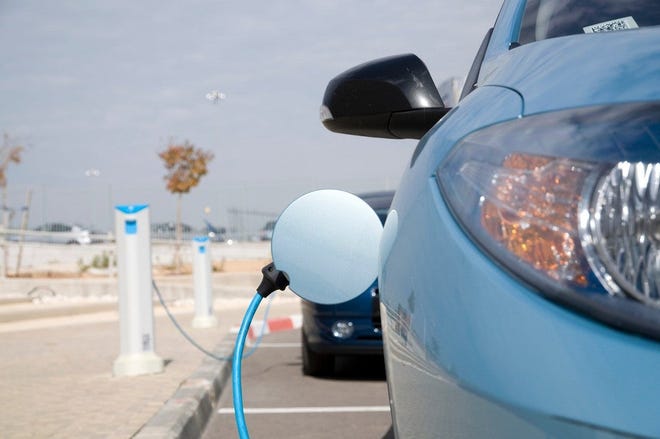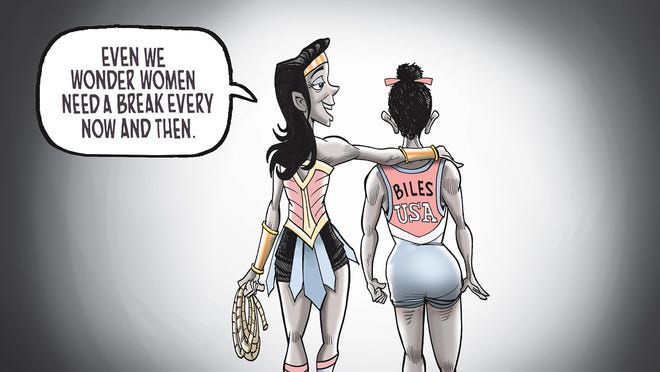With the exception of World War II, it is difficult to recall a time in history when technological innovation and economic growth have intersected to the extent we are witnessing today.
But just as the GI Bill helped stimulate America in the mid-20th century, our success as we sprint toward the mid-21st century will require policymakers to focus on innovation – or this opportunity to smartly transition to electric fuel will be lost.
Everything we manufacture and consume, including food, requires both transportation and energy. The world is already more than a decade into what will be a massive transformation of this system as we transition to electric vehicles.
This is a fundamental shift that will restructure both the transportation and energy industries.
President Joe Biden’s proposed gas mileage regulations would help to cut pollution by 2026. Equally important, the administration is seeking to assure that up to 50% of all new vehicles sold in the US will be electrically powered by 2030. Major automakers concur on both points. That is unprecedented, but there are good market-based reasons why this is so.
USA TODAY’s opinion newsletter: Get the best insights and analysis delivered to your inbox.
Additionally, the Senate last week passed a bipartisan $1 trillion infrastructure bill that includes $7.5 billion for electric vehicle charging infrastructure. That kind of expenditure can help to make EVs practical for more Americans; yet caution is advised to assure that the infrastructure involves a market-driven plan that is not a mere afterthought.
Such paradigm shifts can be unnerving, but we should embrace this change.

You may recall images from the earliest days of COVID when people around the world stopped driving and began to work virtually. Within days, satellite images showed our most air-polluted cities clearing. The Himalayas became visible again from the ground for the first time in living memory.
The lesson is that all that visible (and invisible) pollution was tied to transportation – and that we could cure it by reducing tailpipe emissions in a matter of days.
Indeed, we now have the basis for a moral imperative. An imperative that compels us because we have a technological solution at hand, which is supported by an extraordinarily strong business opportunity. This combination is rare.
The right decisions on charging technology will help to reduce “range anxiety” – a legitimate concern among consumers and fleet operators who worry about not being able to drive the distances they are accustomed to, or who would resist (as many have) the idea of “plugging in” more frequently than they do with their gas-powered vehicles.
The right decisions, if made early, will reduce the cost of maintaining the charging infrastructure – a point that is often overlooked.
Think about how interstates were planned
In their zeal to fund charging stations, it is critical that Congress establish a strategic plan for how to best build out America’s EV charging infrastructure – not unlike Eisenhower’s post-war Federal Aid-Highway Act. Otherwise, we’ll be kicking ourselves in a few years if we’ve squandered this funding.
It is vital that we not allow our century-old expectations of the 3-minute gasoline fill-up to become the model for how we fuel electric vehicles. Today, drivers are used to filling their gas tank, driving until the gauge reaches a low level, and then repeating the process by filling the tank to full again. That “full-empty-full” model takes too long and hastens the degradation of batteries. It cannot be the design for the next century.
This kind of thinking recalls the way we transitioned from horse-drawn carriages to gasoline cars over a century ago. As gasoline-fueled vehicles began to appear there were no fuel pumps, so drivers bought buckets of gasoline from a general store and filled gas tanks through a funnel.
Charging an EV by manually plugging it into a charger is very much a case of following the pattern of the old way of doing things, but it is ill-suited to both human behavior and the way batteries function.
While we may need today to transition to EVs by providing for traditional charging stations that look similar to a gas pump, we should plan for more advanced technologies that can charge EVs automatically.
The good news is these new technologies are already available. Fast and efficient automatic wireless charging has been commercialized for years and is in operation in several states and in Europe. I’m proud to oversee a team of superb engineers outside Philadelphia who are part of this global effort.
Electric charging can become seamless
Electric fueling should be so carefree that it will actually be preferable to gasoline fueling. You should never need to swipe a credit card again. The dispensing of energy ought to be as simple as electronic toll collection has become.
If our goal was to rebuild our interstate highways and bridges, would we build manned toll booths where drivers stop to hand dollar bills to an attendant, or would we use fully automated electronic toll collection?
Money allocated for EV charging in the final federal infrastructure plan must include funding for a national strategy that looks ahead and includes the ingenuity of America’s innovators. The market must play a central role in driving these decisions. This is the key to realizing the full benefits of this historic investment.
Andy Daga is CEO of Momentum Dynamics and a member of the Institute of Electrical and Electronics Engineers and the Society of Automotive Engineers.

